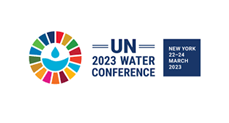UN water conference
Context: The United Nations 2023 Water Conference held on March 22-24 was the first such meeting in 46 years.
In a recent report entitled ‘Water for Sustainable Development 2018 – 2028’, the UN recognised the urgent need for action.
What is the water conference?
- The water sector is prone to fragmentation because water problems tend to be local.
- If a particular lake is polluted or a particular area is often flooded, it needs local solutions. Therefore, there is an inherent problem in mobilising globally for local problems.
- The last UN Water Conference, held in 1977, was groundbreaking as it resulted in the first global ‘Action Plan’ recognising that “all peoples, whatever their stage of development and social and economic conditions, have the right to have access to drinking water in quantities and of a quality equal to their basic needs.
- This declaration led to several decades of global funding and concerted effort to lower the population without access to safe drinking water.
What are the current challenges?
- Extending services to underserved populations is relatively uncontroversial but it comes down to finding the money to pay for it.
- This is already occurring in India through programmes such as the Swachh Bharat Mission and the Jal Jeevan Mission.
- However, the challenge is that improving access to water and sanitation no longer translates directly to sustained access to water and sanitation.
- For example, many drinking water projects have failed because they drew too much groundwater or the water sources were contaminated, leaving communities again with no access to water.
- Groundwater over-abstraction is mostly driven by agricultural pumping. The only way to solve this problem in heavily irrigated places like Punjab is to pump less.
- This would need a policy change which requires many agencies and ministries to cooperate. As such, the water problem is no longer about access to water.
- The remaining SDG targets pertain to sustainable agriculture, industry, and natural ecosystems. These targets are harder as they need, among other things, tough political choices and a stronger democracy.
What are the key commitments?
- This year’s conference resulted in 713 voluntary commitments by philanthropic donors, governments, corporations, and NGOs.
- This included a $50-billion commitment from India to improve rural drinking water services under the Jal Jeevan Mission.
- On the technology front, apart from specific innovations in wastewater treatment, there were several proposals for incubation platforms focusing on water management.
- There are already many solutions for knowledge-sharing and thus there is a need to accelerate cross-learning.
- A notable tool here was the W12+ Blueprint, a UNESCO platform hosting city profiles and case studies of programs, technologies, policies that addresses common water security challenges.
- An effort called ‘Making Rights Real’ offered to help marginalised communities and women understand how to exercise their rights.
- Similarly, the ‘Water for Women Fund’ offered mechanisms for more effective and sustainable water, sanitation, and hygiene outcomes for women. However, whether these commitments will become binding through the COP process, only time will tell.
| Practice Question
1. What is the UN water Conference? What are the outcomes of the recent meeting? |




